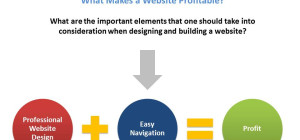 An increasingly prevalent topic of conversation in the office is this “mobile-first index”, reportedly on the cards from Google, designed to take the information available on the mobile version of your website and give you a rank based on that.
An increasingly prevalent topic of conversation in the office is this “mobile-first index”, reportedly on the cards from Google, designed to take the information available on the mobile version of your website and give you a rank based on that.
Obviously pandering to the mobile browsing crowd, Google wants to make sure that their experience is great and not to show users web sites that look great on desktop but horrific on mobile. To take advantage of this then means you need to be optimised for mobile browsing.
Flash
Do you remember when Flash media was a thing? Still, some websites use this old and out-of-place interactive platform on their website. Of course, the reason why Flash has died a quick and sudden death is the lack of mobile support.
Shoddy and flimsy at the best of times, Flash’s non-starter of support on iOS and Android has meant that HTML5 is now go-to for interactive elements on websites. Of course, some people maybe have websites that still utilise the old Flash platform.
So, think, and make sure that if Flash is still on thing on your website, you eradicate it moving forwards. Any Flash on your site is going to come across as a greyish box, devoid of any information, resulting in a horror show of a browsing experience. And it’s non-optimised for SEO, so why bother?!
Small Font
Nothing is more useless than a website you can’t read. Whether disparate themes are running through the page, poor use of colour or font, or just a general sizing issue, if people can’t read the information, Google is going to know about it.
While I’m not going to sit here and deliver hard and fast rules regarding what you should be doing regarding all the above, I’m simply going to say give it to your mum and ask her to read it. If she can see everything without squinty or pinching to zoom or any other palaver, you should be okay.
Honestly, small font is the killer. Don’t make the mistake of thinking that a website will simply zoom in and make it bigger. General mobile responsive design is proportional for elements like boxes and images, not for font size. If in doubt, go bigger (though too big has its drawbacks).
Touch Elements
So, you’ve got this whiz-bang mobile website. Step one, check. But is it usable in its current form? Let’s say you’ve got a landing page slideshow above the fold (in other words, a selection of images and copy at the top of your home page that repeats one after another), and it can be navigated by touch. Do you know that though?
I mean, have you inspected it personally, and believe that the function of the touch capacity actually delivers not just what you want, but what the typical user would expect? It’s this consideration towards regular usage that is critical for mobile optimisation.
Google is going to look at elements such as this, and they’ll know how it works, even without using it. You must guarantee that the feature operates in the way you want AND the way the user expects, otherwise, your mobile website is designed incorrectly.
Pop-ups
I get it: you have the most amazing email list, filled with lots of cool, interesting information that is sure to improve my business 1000%. Just, have a bit of patience before you shove it down my throat, yeah?
An increasing (and increasingly alarming) trend is to have a full-screen pop-up asking for users to sign up to the mailing list, or to become a member, or to do something to someone somewhere. And while I get the importance of lead conversion and call to actions, don’t do it to the detriment of your user base.
Full-page pop-ups suck on mobile browsing platforms. They are frequently formatted incorrectly and can sometimes reduce the functionality of the application itself (seriously, there are some horrors out there). I’m not saying you can’t do pop-ups, but you need to do them in a way that is classy, elegant and respectful of the user and their browsing preferences. Call to actions don’t need to be crass, in your face things; just have a little patience.
The Mobile-First Index is Coming…
If your website is stuck in the early 2000’s, you might want to do something about that. I doubt you’ve gotten very far with your organic results anyway, but you are set up to only go backwards.







